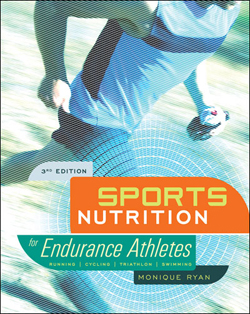Nationwide Teleconsulting • Sports Nutrition E-Programs


Sports Nutrition Blog, Uncategorized
Over-Hydration Hype- Are you confused about hydrating for the Chicago Marathon?
 Recent article in Chicago Tribune highlights hydration- but not fueling- for the 26.2 mile race
Recent article in Chicago Tribune highlights hydration- but not fueling- for the 26.2 mile race
The marathon is a long race- one that is going to steadily deplete the carbohydrate stored in your muscles and your liver. Your muscles burn this stored fuel during the race, while the liver sends glucose into your bloodstream- providing fuel for your brain. The carbohydrate in your blood can also provide fuel to your muscles- especially important when muscle carbohydrate stores run low towards the end of the race. So clearly fueling is improtant for the 26.2 mile event. Some other key points to consider:
- You will also sweat during the 26.2 miles- how much you sweat in an hour is based on your own individual sweat losses in specific weather conditions.
- How much sodium you lose in your sweat is also specific to you. Currently the forcast for Chicago on Sunday the 13th is a low of 45 F to a high of 66 F- pretty good running weather.
- While your sweat losses peak in hotter temperatures, your energy needs don’t go down in cooler weather.
- Think back to your long runs in these conditions- what was your hydration and fueling plan? Stick with that plan. Perhaps you developed that plan over the past few months of training. Maybe you took advantage of the aid stations along the lake path- don’t change what has worked so far.
- Fueling with a sports drinks provides everything that you need for the race- the trinity of endurance nutrition- fluid, carbohydrate, and electrolytes-mainly sodium. The key here is just the right amount- not too little or you may not complete the race in your projected time, and not too much- no stomach problems and no over-hydration.
So, what is the best approach- checking thirst, or having a plan? Here are some key points to consider.
- Research has shown that thirst is not the best drive for drinking optimally to match or minimize your sweat losses.
- You should at least drink when you are thirsty- but this may not be enough fuel for the race. Most runners require 30 to 60 g carbohydrate per hour.
- Your sweat losses each hour will add up over the race- a race lasting over 3 hours for the vast majority of finishers.
- Recent research has compared athletes drinking ad lib (when thirsty, when they want) versus following a hydration plan- the athletes who followed the hydration plan performed better- and didn’t over-hydrate (not with a good plan!).
- Recent research has shown that even mild dehydration can slow an athlete down.
- Overhydration or the dangerous hyponatremia (low blood sodium) is more likely to occur when you consume only water during the race, rather than a sports drink which provides sodium.
- Overhydration is more likely to occur if you drink several cups of fluid at each aid station, or an amount greater than your sweat losses.
- The incidence of over-hydration in the marahton has gone down from the 13-percent data published over 10 years ago.
- Many cases of hyponatremia ( low blood sodium) occur without noticible symptoms and can be corrected with urine losses and sodium consumption after the race.
- Early signs of overhydration or hyponatremia are dizziness and confusion. Other signs include a bloated stomach, fingers, toes, wrists, and ankles and a headache.
- The sports drink on the course is a higher sodium drink and was developed for endurance events to keep blood sodium levels in the safe range.
- You need the carbohydrate from the sports drink to provide fuel for the marathon. The carbohydrate fuels both your muscles and your brain.
- If you just rinse the drink in your mouth and spit it out- your muscles won’t get this fuel. You can’t run the marathon on brain power alone.
So what should you do for the marathon?
- Stick with the plan that you followed on your long runs.
- Plan out which aid stations you want to stop at and how much you want to consume at each stop.
- One gulp of fluid equals about one ounce. Most cups are filled to the 3 ounce mark. You might spill some as well.
- Use gels, chews and bars as you have in training- don’t try anything new during the race. They need to be consumed with 4-8 ounces of water for optimal stomach emtying. These products generally do not supply as much sodium as sports drinks.
- Don’t try the food on the course if you have not trained with that food- your tolerances are an unknown.
Of course if there is any question, or signs of symptoms of hyponatremia, detour from the race and get to a medical tent. There will always be another marathon.
Monique Ryan is a Certified Specialist in Sports Dietetics with over 25 years of experience helping active people optimize their nutrition and body composition. Contact us at 847-864-8689 to schedule your consult. Ryan has worked with elite athletes in soccer, football, basketball, triathlon, cycling, and mountain biking.
She is the author of Sports Nutrition for Endurance Athletes, 3rd edition.